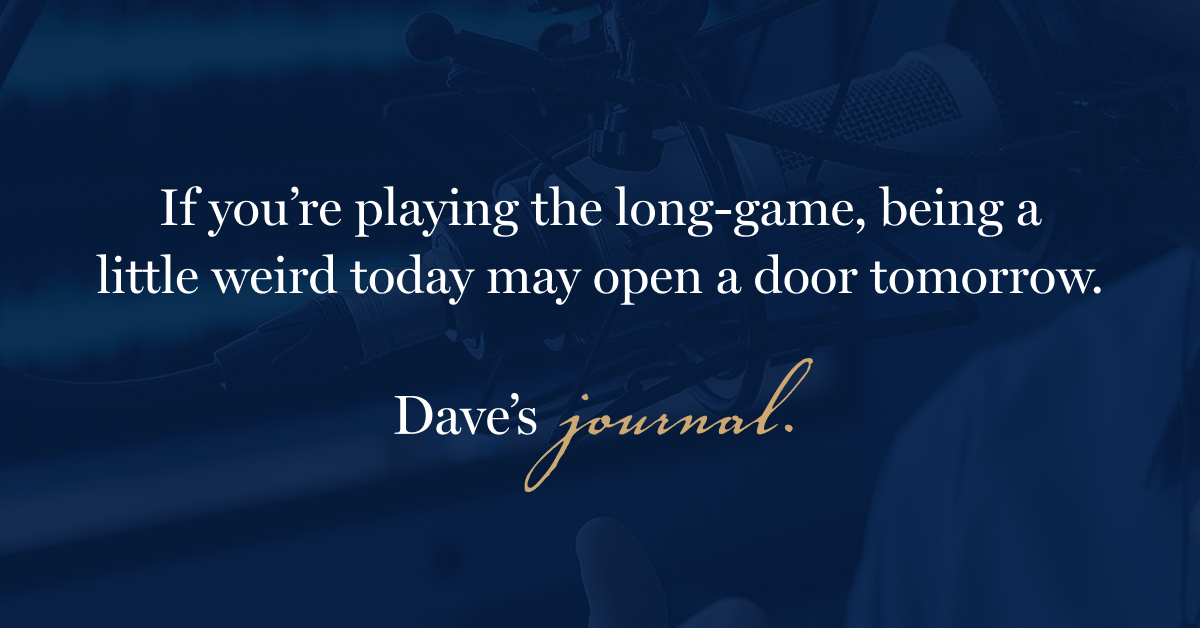Fifteen years ago, I was hired by the franchise owner of a Dale Carnegie office to help grow the business — and eventually develop into an instructor myself.
Tom, who hired me, was the kind of person all of us hope to work for in our careers. He cared about people so much that you could barely ever get him talking about himself. Just as important, he lived and breathed the values of Dale Carnegie.
Carnegie offices have always been on the conservative side in business attire and Tom was on the conservative side of conservative attire. He showed up every day in a dark suit, traditional tie, and a white shirt.
I heard someone joke the first week I was there that you’re allowed to wear any color dress shirt you want, as long as it’s white.
Not thinking much of the comment, I showed up a few weeks later to a staff meeting wearing a dark suit, a tie, and an ecru shirt (a very light, beige color).
While Tom said nothing himself, I noticed a few stares from others during that day’s staff meeting — including a senior college who pointed out my “brown” shirt when the focus of the agenda had turned to me.
Turns out the joke about white shirts wasn’t a joke after all. I got the message, and it was fine. I bought some more white shirts and everyone was happy.
The bigger issue eventually loomed with clients. I’ve called Southern California home for 20 years now. I’m don’t think there’s ever been a time that suits and ties have been the norm here. There was also a broader, cultural shift happening here in the United States about the time I started with Carnegie to dress more casually at work.
As time went on, it became increasingly apparent that our conservative dress was becoming an obstacle. A valued client approached me one day and said, “We love working with your team, but it’s really odd that you all look like the Secret Service every time you show up.”
I knew it wasn’t likely that Tom would entertain a formal policy change out of the blue, so I decided on a different approach. I starting wearing brightly colored ties to work, while going out of the way to ensure every other item of clothing I wore was as conservative as possible.
Still technically in line with the dress code, nobody could say much. Since we were a small office, everyone noticed. Once in awhile, I’d through in an ecru shirt or a blue shirt when there were no client meetings or it wasn’t likely I’d run into Tom.
One day, someone else wore a colorful tie. After awhile, a few more colors started showing up from others. Finally, the glorious day arrived when the senior colleague who had commented on my “brown” shirt a year or two earlier, showed up for a formal meeting in a blue shirt and a sweater vest.
Shortly after, the policy changed. When working with clients who had causal dress cultures, we could ditch our ties.
Looking back, it seems like such a tiny thing. At the time though, in the midst of working in a very traditional organization with generations of history, it was a fairly significant shift.
There’s a time and a place for a good protest or boycott. Too often though, that’s the starting point instead of the ending point. When it comes to long-standing cultural norms grounded in identity, transitions come slower.
If you show up as a leader in an organization and look and act really different than everyone else, most of the time that’s a mistake. People aren’t likely to take you seriously, even if they don’t dismiss you outright.
If you show up as a leader and don’t do anything different than the norm, then the norm stays the same. When Jurgen Appelo appeared on Coaching for Leaders awhile back, he made this invitation:
Be a little bit weird.
If you’re playing the long-game, being a little weird today may open a door tomorrow.
It’s a lot harder to dismiss someone who’s being just a little bit weird. As Seth Godin points out, “People like us, do things like this.” An individual who doesn’t quite fit in one way, but who is “like us” in most other ways, is still seen as part of “us.”
If you’re in the “people like us group” and you start to shift a tiny bit on the “things like this,” — and it’s a helpful change, then the rest of the “people like us” may transition, too.
If you want to shift a long-standing cultural norm for the benefit of the organization, consider taking on the identity of being just a little bit weird. If you do that while honoring the culture overall, you may just open up the door for lots more.
Dave's Journal is available by audio on Apple Podcasts, Google Podcasts, Overcast, Stitcher, and Spotify.





